Abandoned R-Z
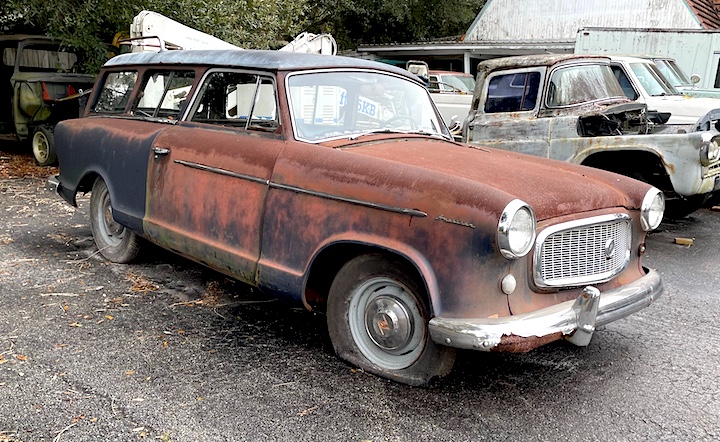
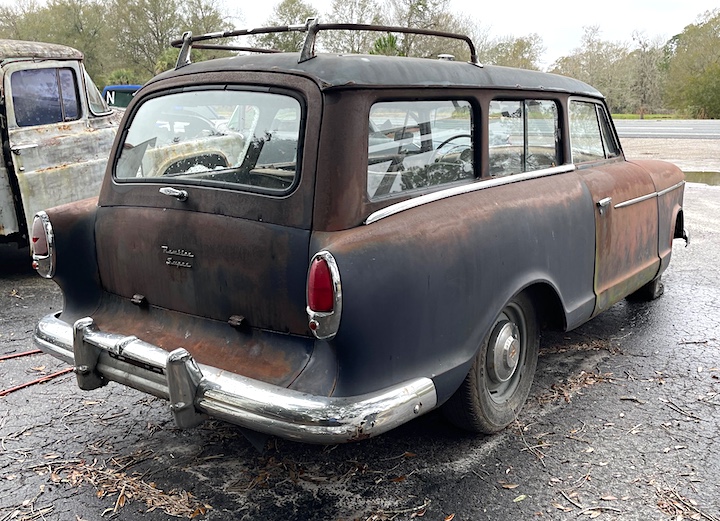
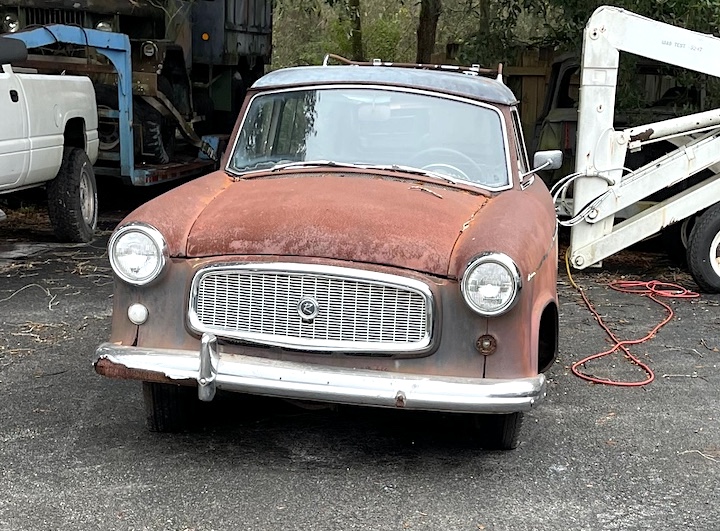
RAMBLER AMERICAN (late '60s) — The Rambler American is a compact car that was manufactured by the American Motors Corporation (AMC) between 1958 and 1969. This first-generation Rambler American compact station wagon was manufactured from 1958 through 1960, possibly an answer to the smaller models from the Big Three. The only engine was a 195.6 cu in (3.2 L) flathead six producing 90 hp. It was available in two trims, a base Deluxe model at $1,789 (equivalent to $19,210 in 2024) allowing AMC to claim it to be the lowest-priced car made in America as well as a Super trim version for $1,874, offering more "luxuries." This first-gen Super wagon was found along U.S. 301 in northern Florida. (Photos by Jim Meachen)
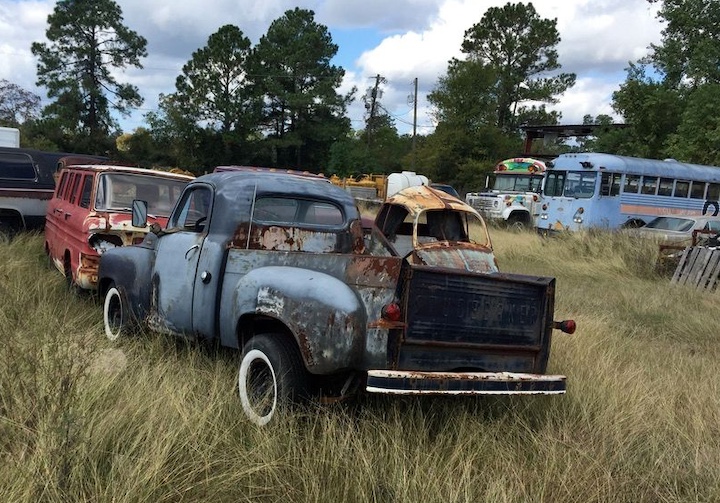
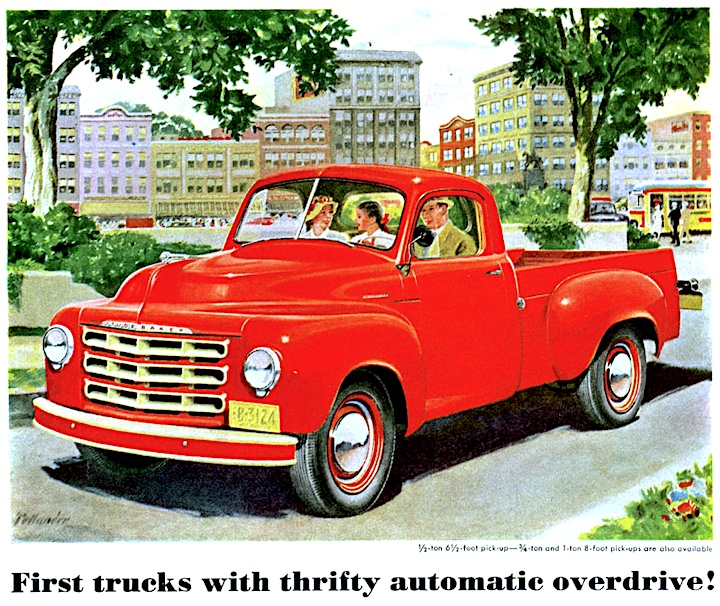
STUDEBAKER (circia 1950) — Studebaker wasted little time after WW II answering the peacetime call for new haulers. South Bend's 2R series of trucks rolled out as 1949 models looking decades more advanced than the trucks they replaced — the dowdy but historically significant M series. Thy were built through 1954. This early 1950s model was found resting comfortably among other retired nameplates. (Photo by Jim Prueter)
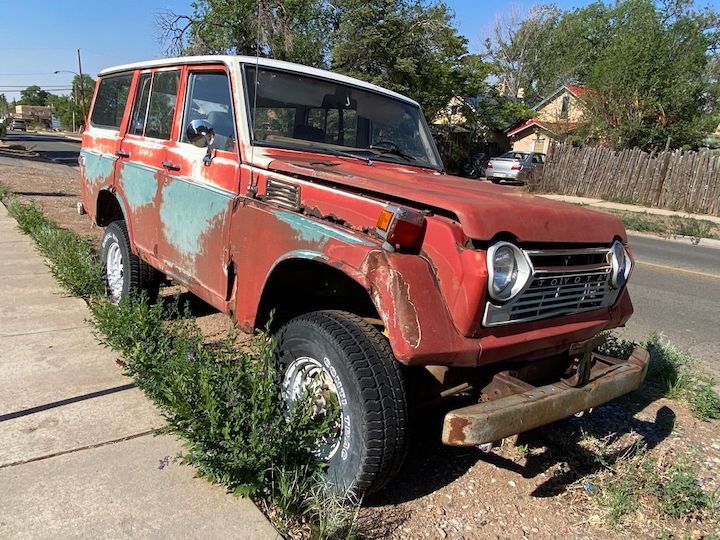
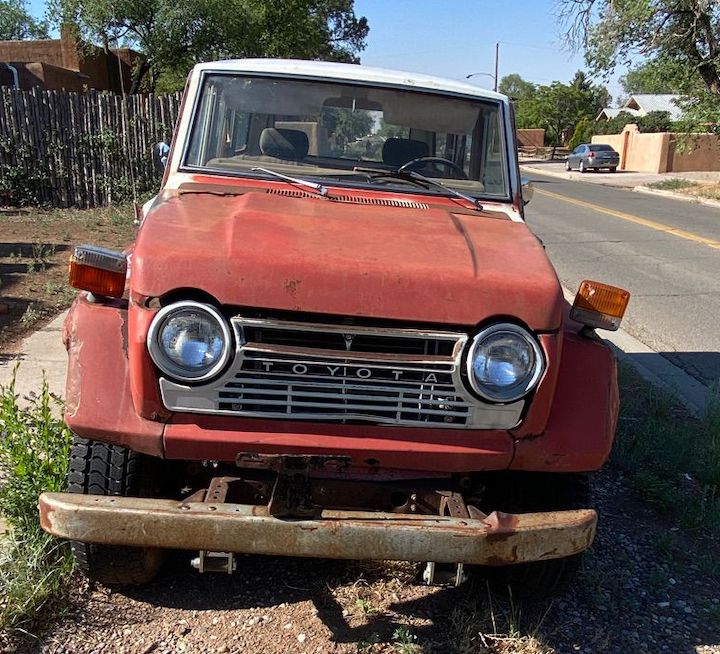
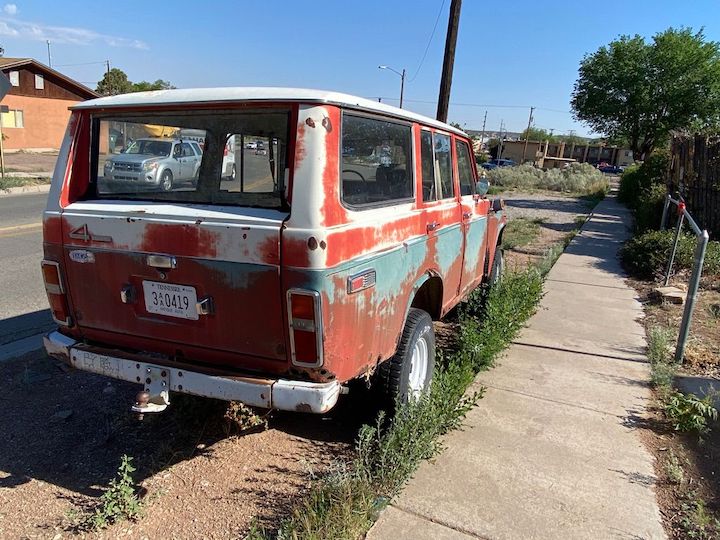
TOYOTA (circa 1967-1980) — This is an example of the Toyota FJ55 — a forerunner of the current Land Cruiser — that was commonly known as the “Iron Pig.” It was built from 1967 through 1980. The exact model year of this truck found in Santa Fe, N.M., is unknown. (Photos by Jim Prueter)
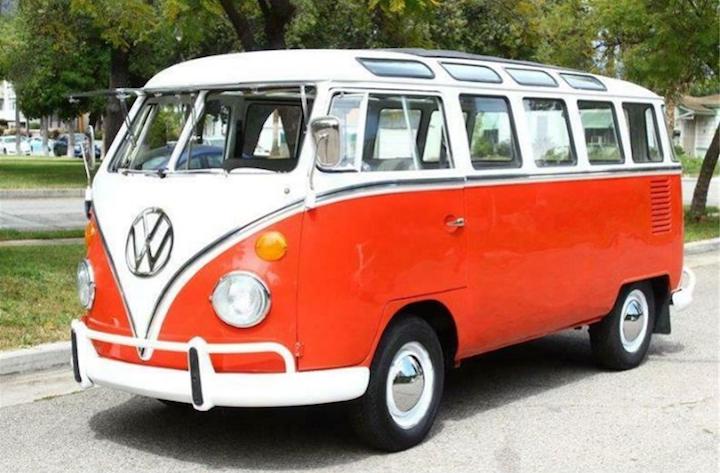
VOLKSWAGEN — This used-up Volkswagen bus, parked on a vehicle trailer, might be headed for a restoration, but in the meantime it is serving as a junk hauler. (Photo by John Harper)



STUDEBAKER (1960-1964) — In 1960 Studebaker introduced a more modern-looking low-priced pickup truck with a new cab derived from the Lark passenger car sheetmetal. The new Champ 5E series featured a simpler, more rugged-looking four-bar grille and a brawnier front bumper. The truck was built through 1964 after which Studebaker truck production ceased. This 1960-64 pickup was found in Utah. (Photos by Jim Prueter)
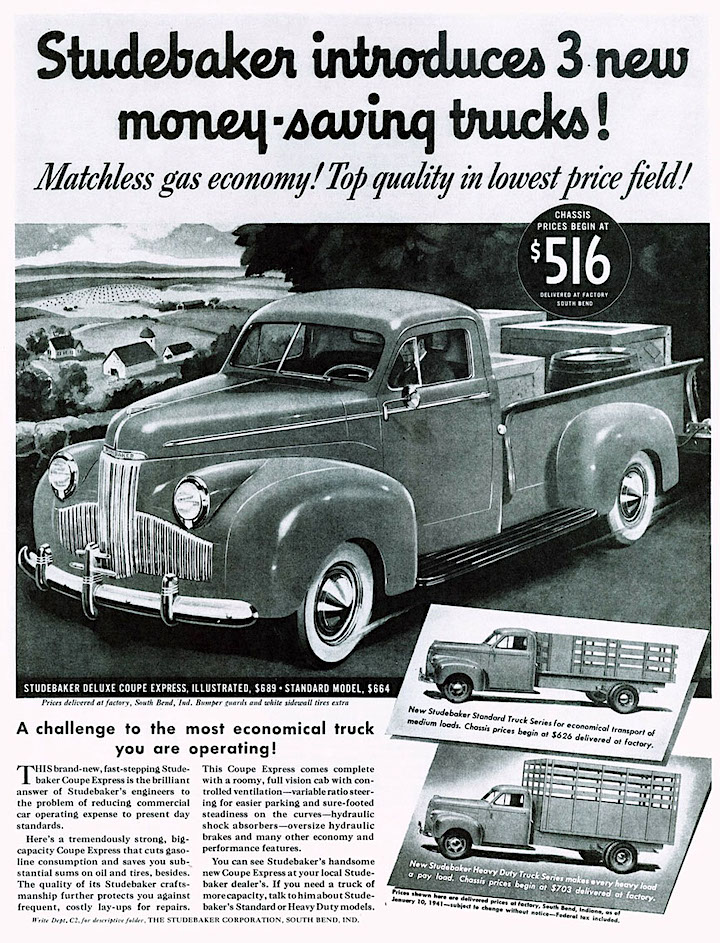
STUDEBAKER (1941) — Many people have photographed this 1941 Studebaker pickup at a Route 66 museum in Victorville, Calif. Since the truck ended up in Victorville, the driver must have "busted" about 100 miles short of his goal of reaching the end of the Rt. 66 road and the Pacific Ocean in Santa Monica. The 1941 truck was the first of the so-called M-series trucks built though 1952. (Photo by Ted Biederman)
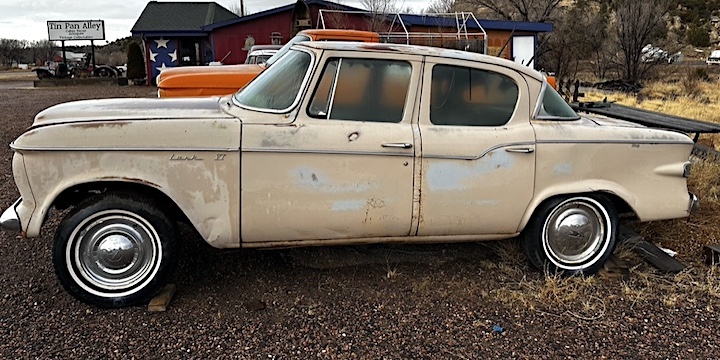
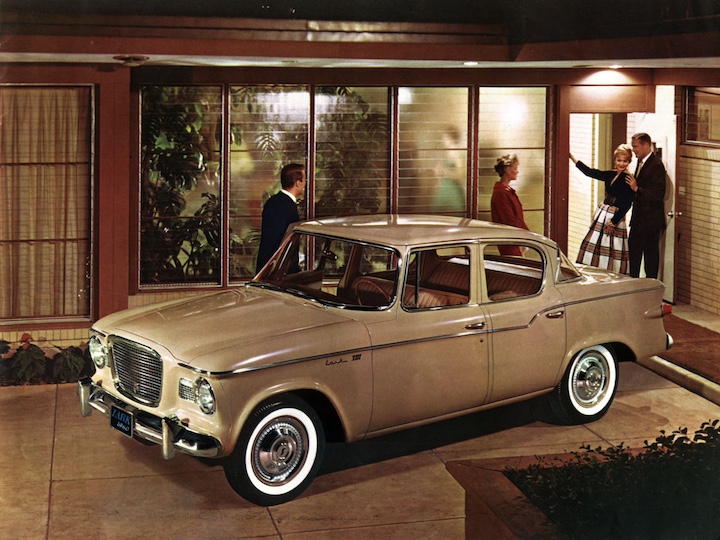
STUDEBAKER (1960) — The Studebaker Lark is a compact car that was produced from 1959 to 1966. This circa 1960 model was found in New Mexico. The Lark came with a choice of an inline 6-cylinder or a 259-cubic inch V-8. The V-8 was measured from 0-to-60 in about 10 seconds, fast for the time. Most of the small-car competition (Ford Falcon, Chevrolet Corvair, Plymouth Valiant) were closer to 20 seconds. (Photo by Jim Prueter)
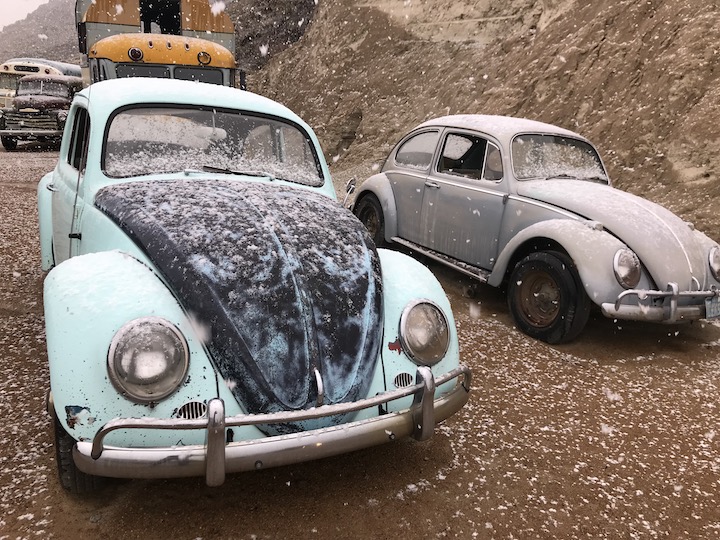
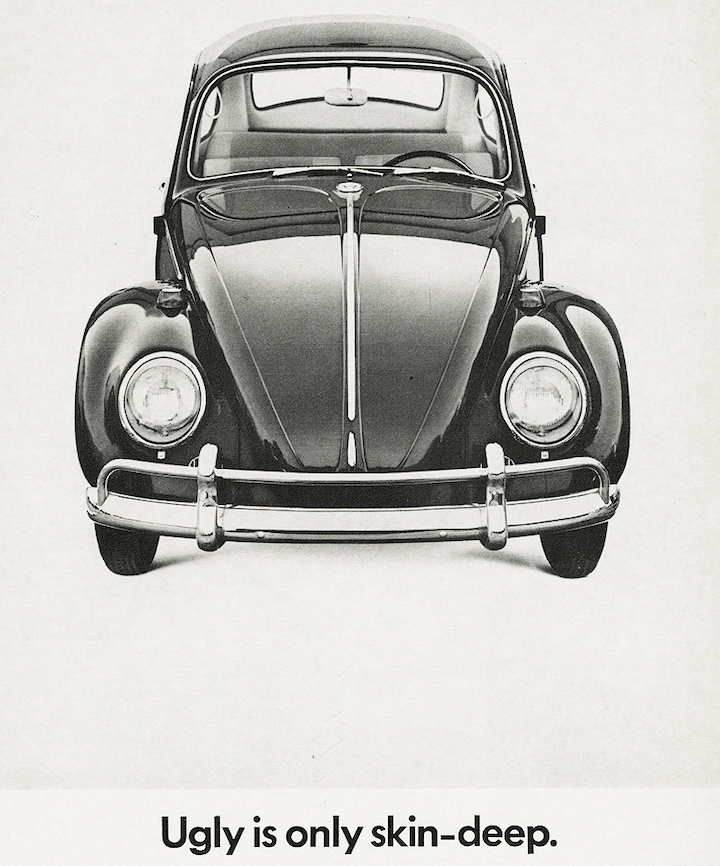
VOLKSWAGEN (Miid '60s) — Two mid-60s Volkswagen Beetle survivors were discovered in Nevada on a snowy afternoon. The German Beetle was one of the most popular imports through the '60s. More than 21.5 million Beetles were sold from its inception in 1938 through 2003. In 1965, its air-cooled 1.5-liter 4-cylinder engine made 53 horsepower. (Photo by Jim Prueter)
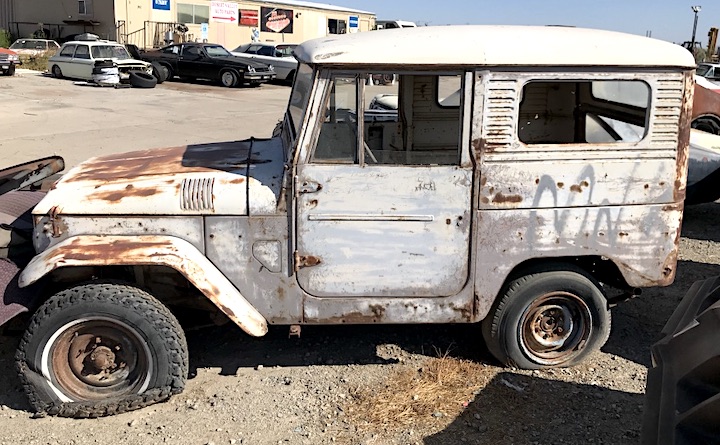
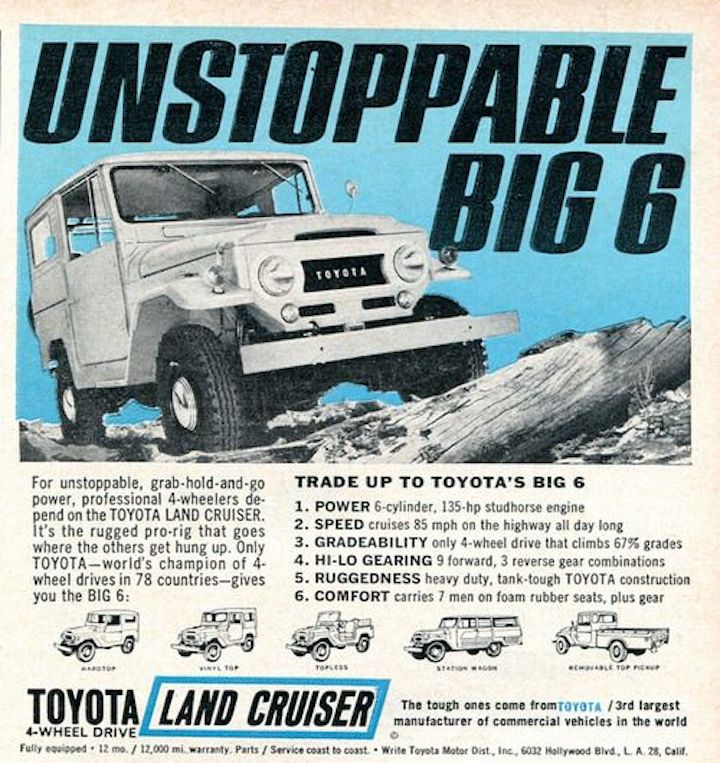
TOYOTA (circa 1965) — The 1965 Toyota Land Cruiser FJ40 is selling from $30,000 to $45,000 depending on condition and the quality of its restoration (according to Classic.com). This circa 1965 copy, which looks restorable, was discovered in an Arizona salvage yard. (Photo by Jim Prueter)
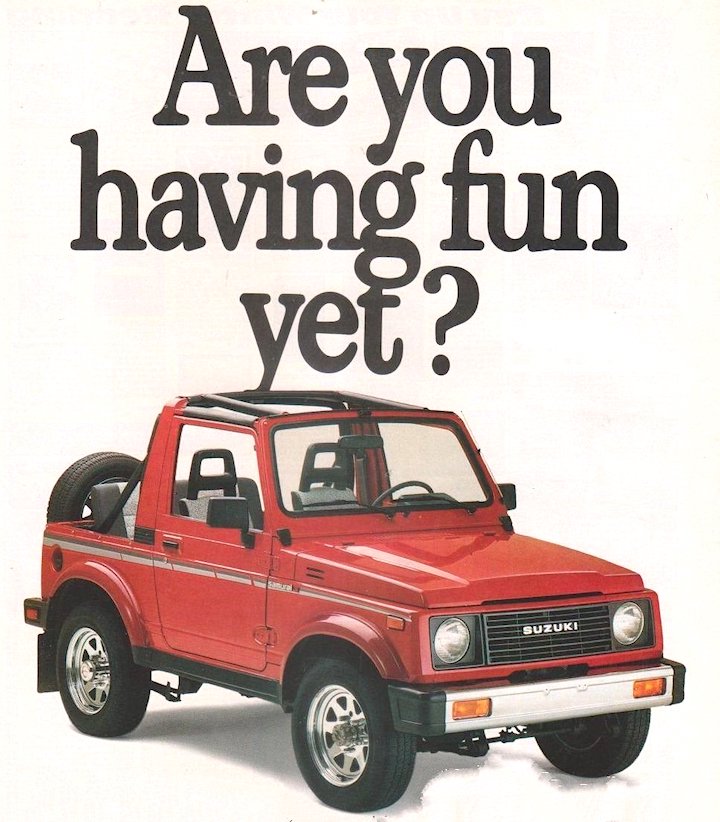
SUZUKI (Circa late '80s) — The Samurai was the first four-wheeled vehicle Suzuki sold in the U.S. beginning in the mid 80s. The U.S. version had a carbureted 1.3-liter overhead-cam four-cylinder delivering 63 horsepower and 74 lb-ft of torque. It was noisy and slow — MotorTrend clocked it to 60 mph in 16.9 seconds. This wore out example resides in eastern North Carolina. (Photos by Jim Meachen)
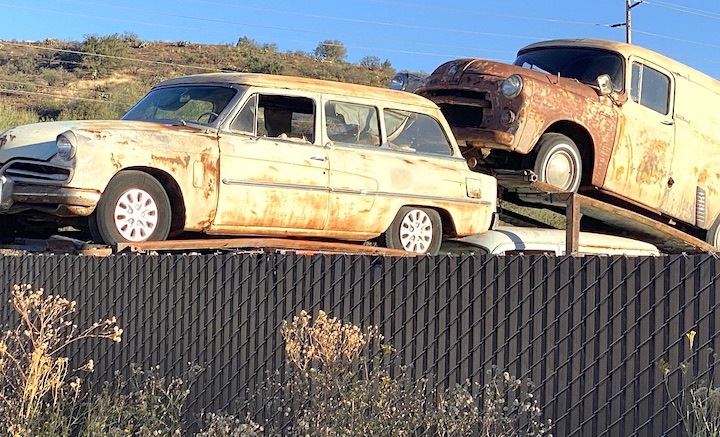
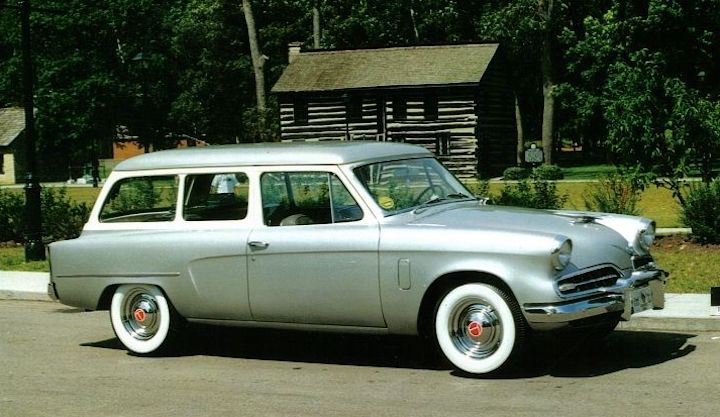
STUDEBAKER (1953) — Station wagons were in vogue during the 1950s, and Studebaker had its version. This 1953 Studebaker wagon sits up high in a salvage yard sharing space with an early '50s Dodge van. As was the case with many station wagons in the '50s, the Studebaker was utility-challenged with only two doors. (Photo by Jim Prueter)
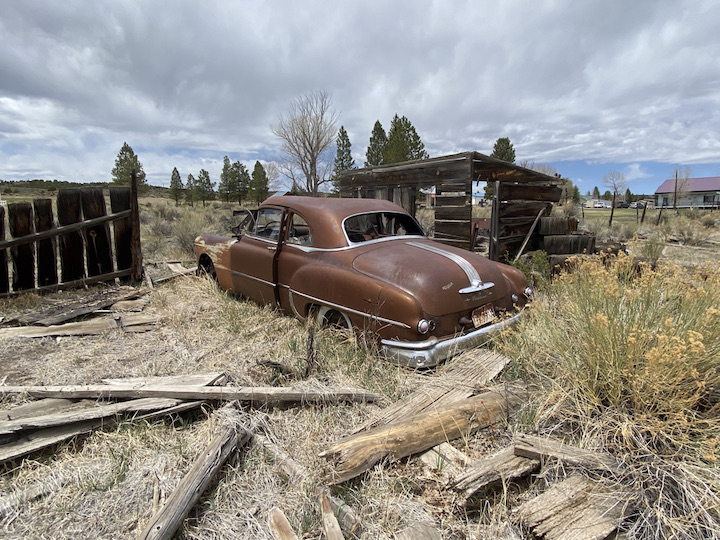
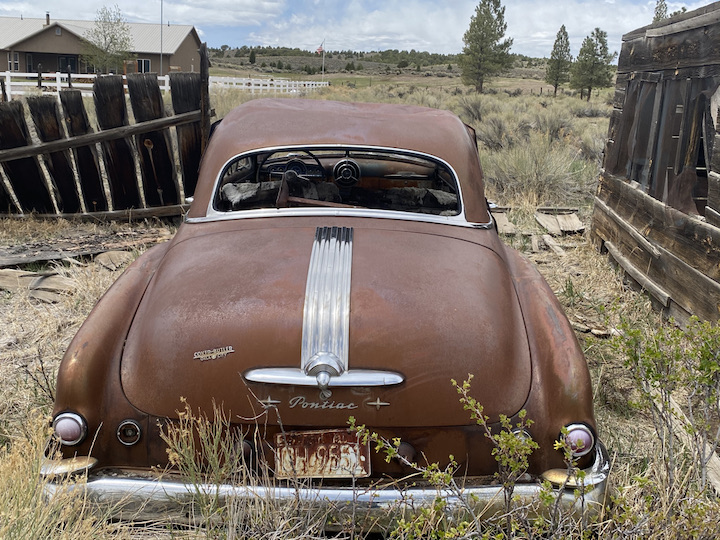
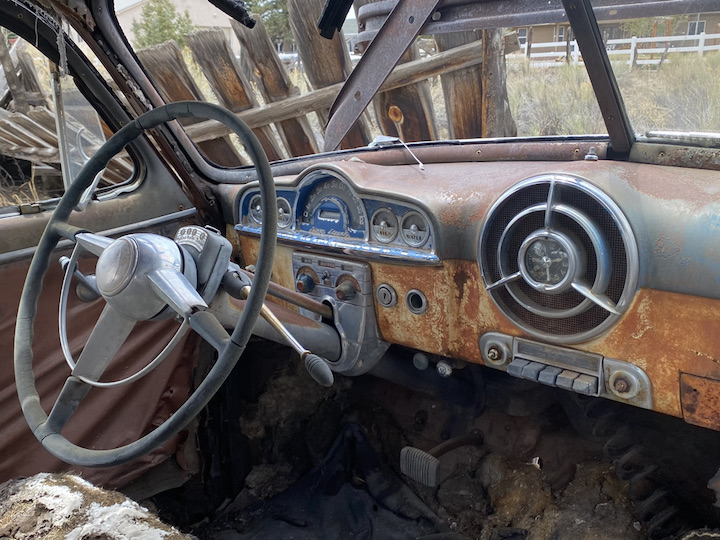
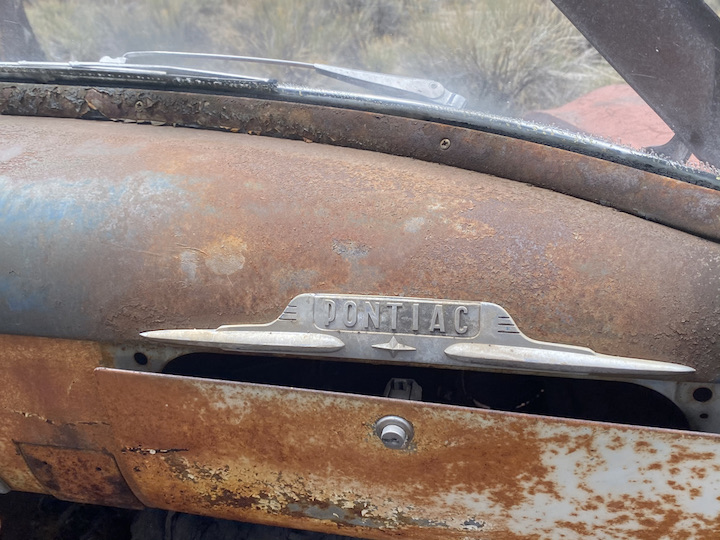
PONTIAC (1949-1950) — This 1949-1950 Pontiac two-door Streamliner makes a picturesque abandoned car scene in Utah. It was an all-new post-war design under the styling direction of famed GM designer Harley Earl. Several models were built including the Chieftain, Streamliner, Catalina, business coupe and convertible. The Streamliner was made front 1942 through 1951. Pontiac sold 450,000 Pontiacs in 1950, the most in the brand's history up to that point. A 268 cubic inch straight-8 Silver Streak was the top engine that year making 108 horsepower and 208 pound-feet of torque. (Photos by Jim Prueter)
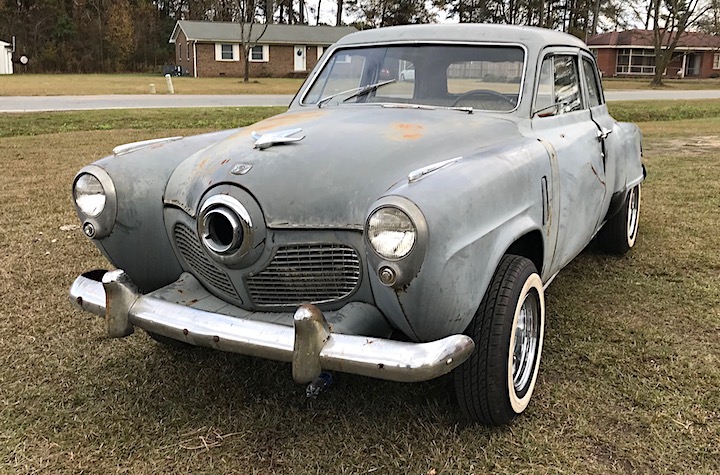
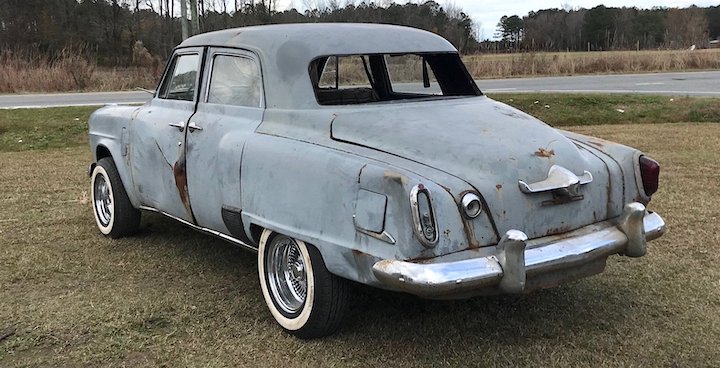
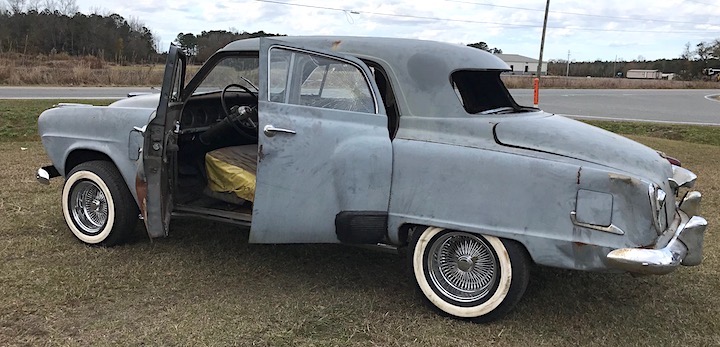
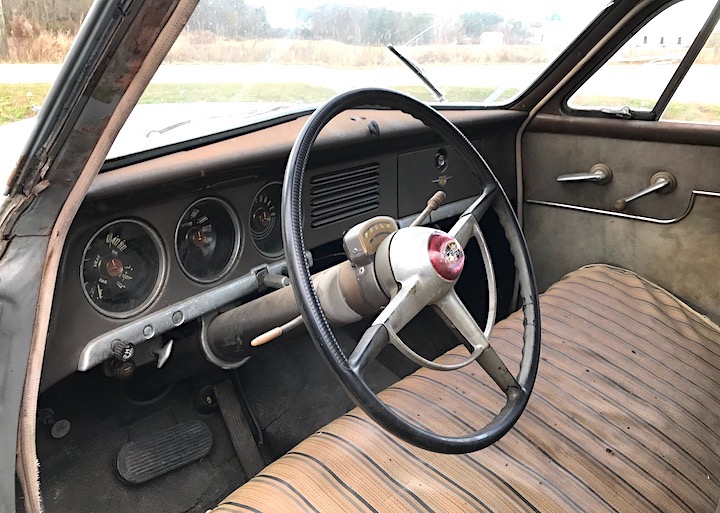
STUDEBAKER (1951) — Just say the word Studebaker, and the chances are good that the image that springs immediately to mind is of the 1950-1951 models, a.k.a. the "bullet nose." Studebaker was the first major manufacturer to put a totally new design on the market after WWII (1947) using the slogan "First by far with a postwar car." But its most noteworthy post-war design came in 1950. It was radical, but commercially successful. This 1951 "bullet nose" Studebaker was found in eastern North Carolina, awaiting restoration, according to the owner. (Photos by Jim Meachen)
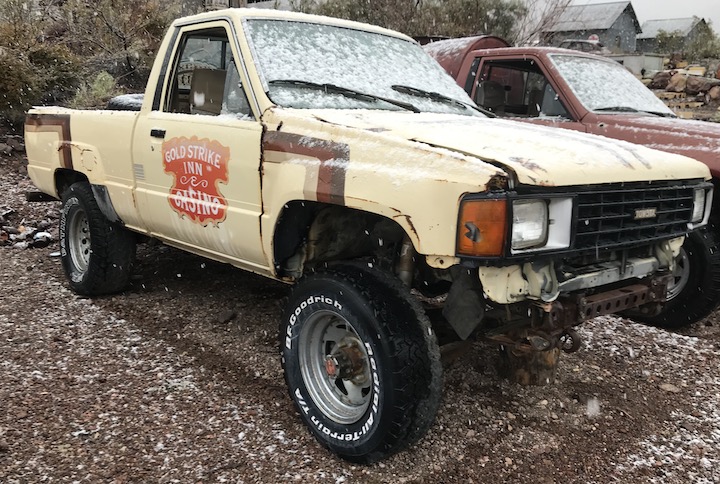
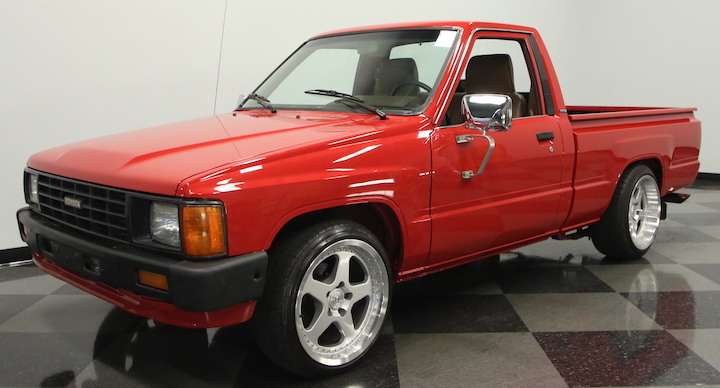
TOYOTA (1984-1988) — The fourth generation Toyota pickup was sold from 1984 through 1988 in two-door and four-door formats. For 1987 the truck got minor interior changes and an exterior redesign, and a V6 engine was introduced in 1988. This fourth-generation truck, which was employed by the Gold Strike Inn and Casino, was found living in retirement in Nevada. (Photo by Jim Prueter)
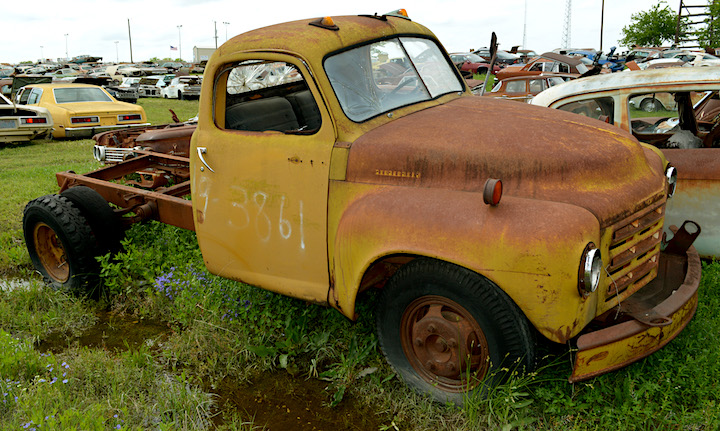
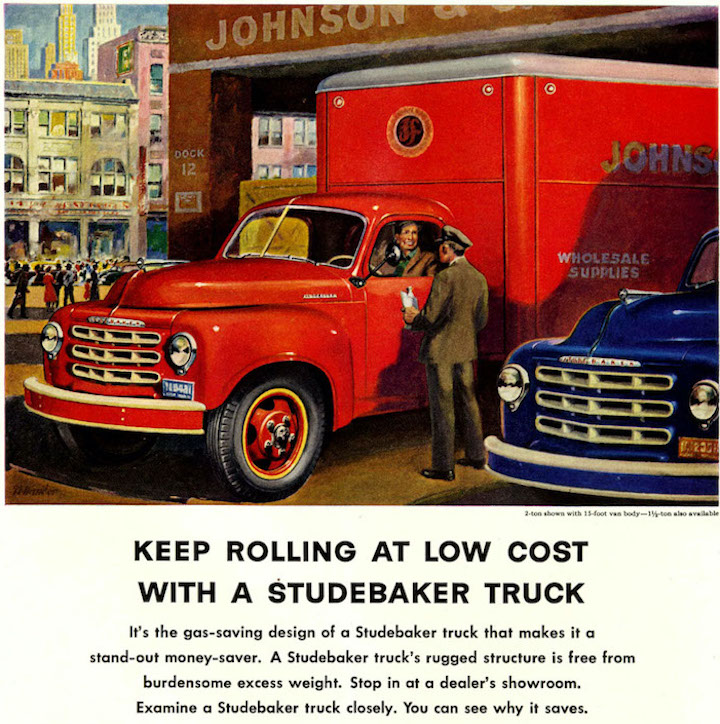
STUDEBAKER (1952) — Unique styling set the 1949-1953 Studebaker trucks apart from the competition. The so-called 2R5 trucks arrived in 1948 — the first post-war redesign. Robert Bourke, a member of the Loewy Studios design team under contract with Studebaker, was the lead designer. This 1952 example was found in a Texas salvage yard. The '52 model was powered by a 102-horsepower inline six. (Photo by Peter Hubbard)
Famed artist and cartographer Bob Waldmire spent much of his life traveling the famous Route 66 from Chicago to Santa Monica creating countless drawings and whimsical maps of life on the "Mother Road." Waldmire died in 2009, and one of the vehicles he used in his travels, a 1967 Volkswagen Squareback, is on display at Henry's Rabbit Ranch on Old Route 66 outside of Staunton, Ill. Waldmire's most famous vehicle — a 1972 Volkswagen Microbus — is on display at the Route 66 Museum in Pontiac, Ill. (Photos by Jim Meachen)
ROLLS-ROYCE (circa 1965) — This circa 1965 Rolls-Royce Silver Cloud stretch limo was spotted in junkyard retirement in South Carolina. Vintage Rolls-Royce limos of various years are used by many wedding planning companies around the country to give newlyweds a unique experience. This example looks as if its given its last ride. (Photos by Ralph Gable)
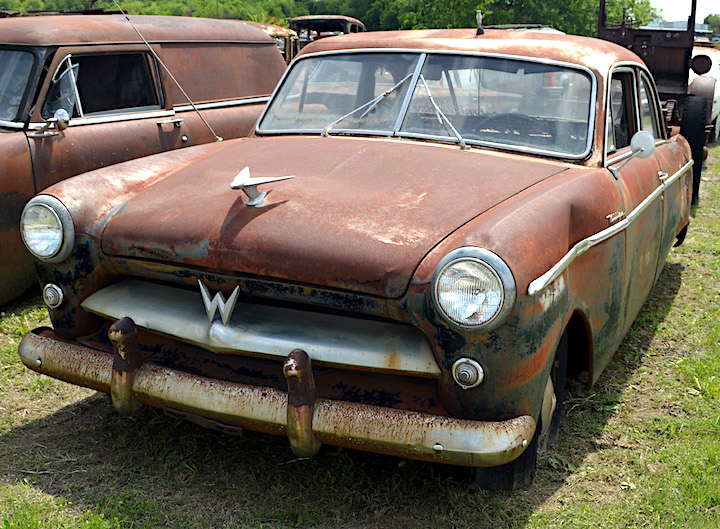
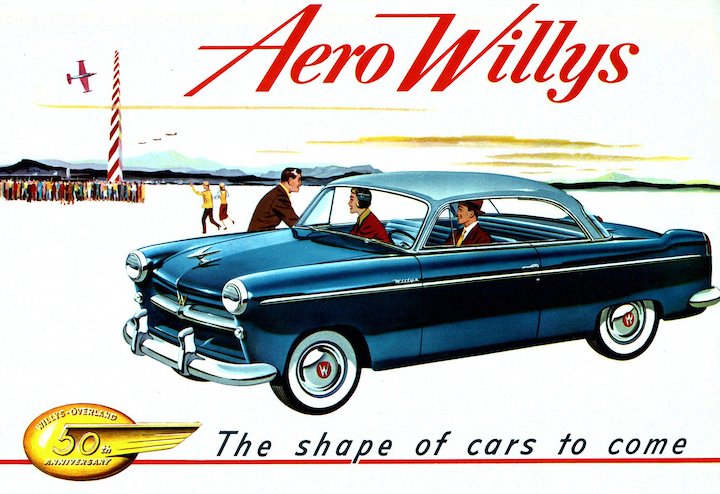
WILLYS (1953) — This 1953 Willys was discovered in a Texas salvage yard. Willys re-entered the car market with a new compact car in 1952, the Willys Aero. At first available only as a two-door sedan, it came with either an L-head or F-head six-cylinder engine. A four-door sedan and a two-door hardtop were added for 1953 along with taxi models. Transmissions included a 3-speed manual, 3-speed manual with overdrive, and a 4-speed Hydramatic. 42,224 cars were sold in 1953, but sales tanked in 1954, and the car's final model year was 1955. (Photo by Peter Hubbard)
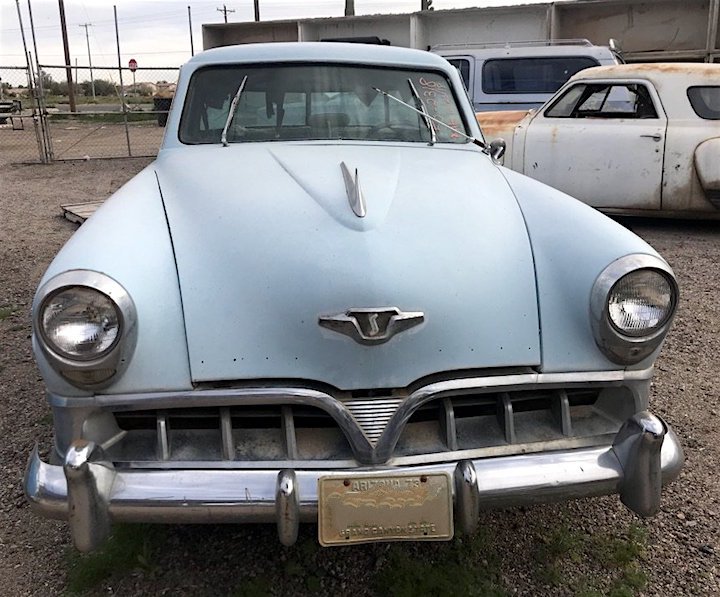
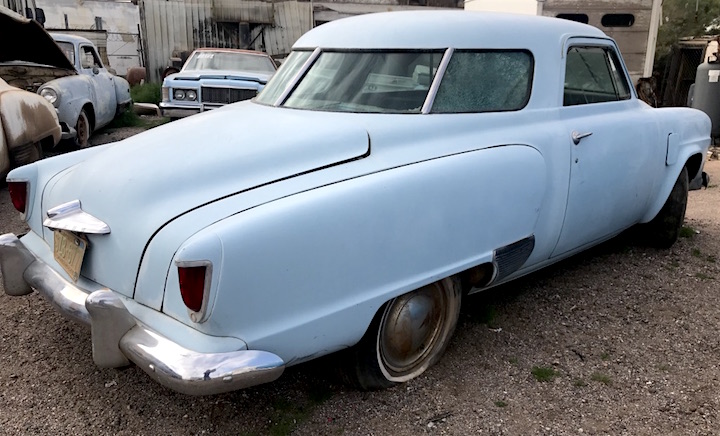
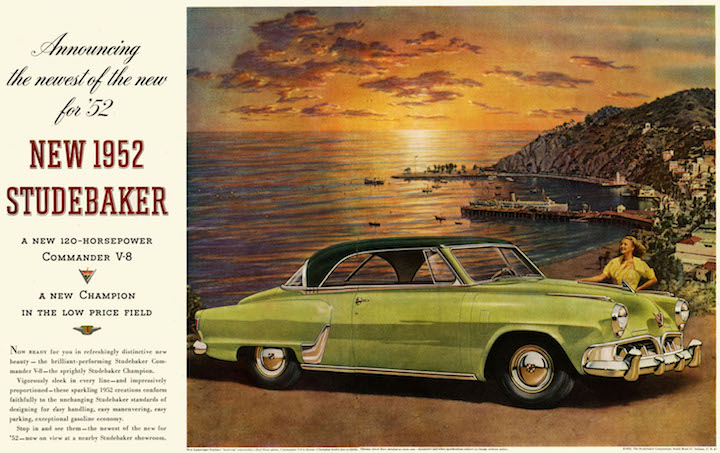
This 1952 Studebaker was found languishing in an Arizona salvage yard. It is the so-called "shovel nose" Studebaker with a redesigned front end from 1951. The rest of the car, however, was a carryover from earlier years with its acres of glass in the Starlight coupe edition. Despite the redesign, sales figures were considerably lower than 1951. There were 246,195 Studebaker's sold in '51, and the number dropped to 167,662 in 1952. (Photos by Jim Prueter)
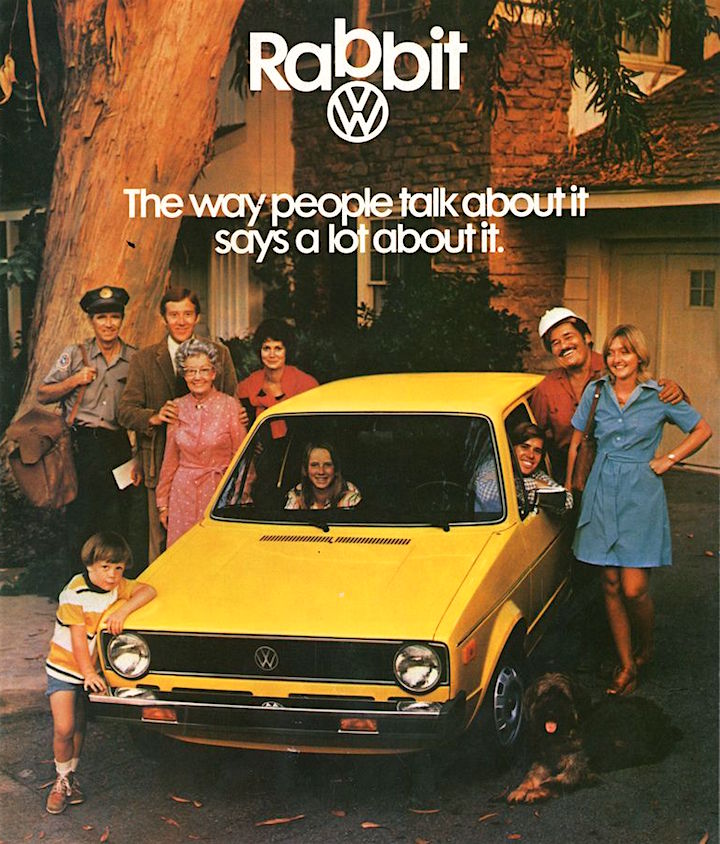
VOLKSWAGEN (LAT 1970S) — This late 1970s model Volkswagen Rabbit was found in a large stand of weeds in eastern North Carolina. The compact Golf was marketed around the world beginning in 1974, but in the U.S. was renamed Rabbit until the mid-80s when VW decided to drop the Rabbit name in favor of Golf. Historically, the Golf is Volkswagen's best-selling model and is among the world's top three best-selling models. (Photos by Jim Meachen)
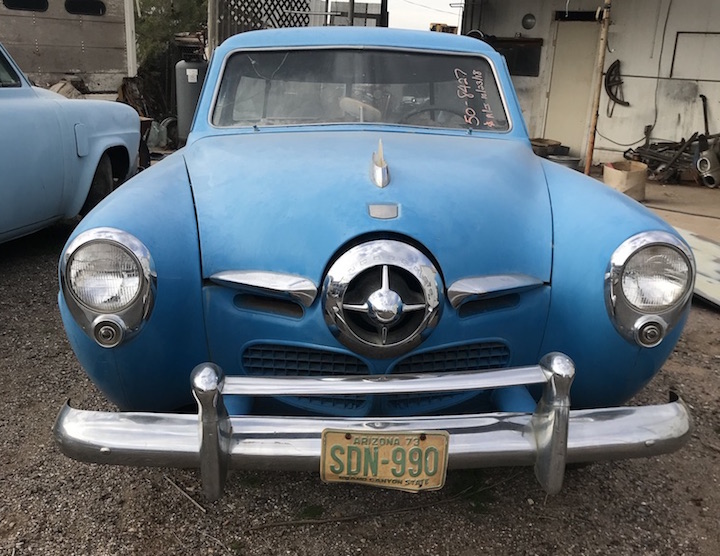
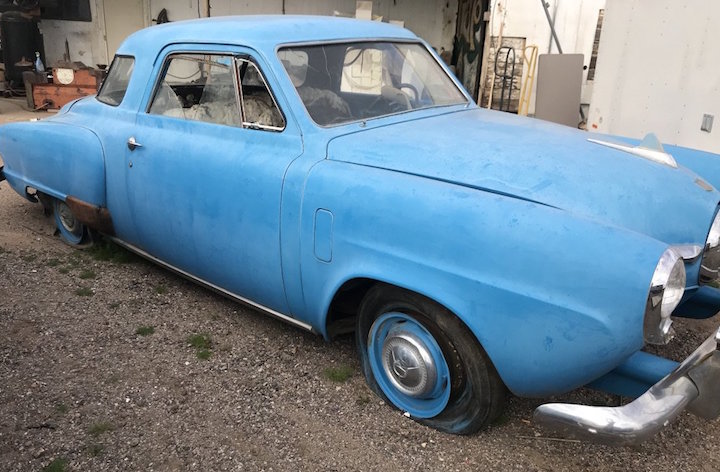
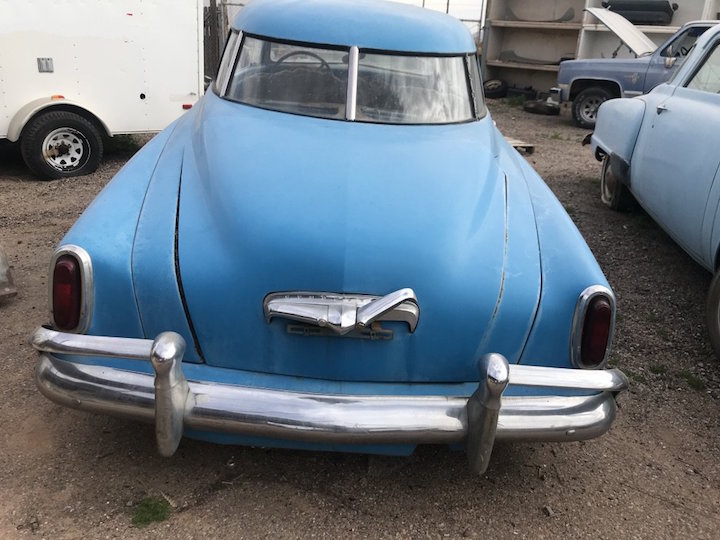
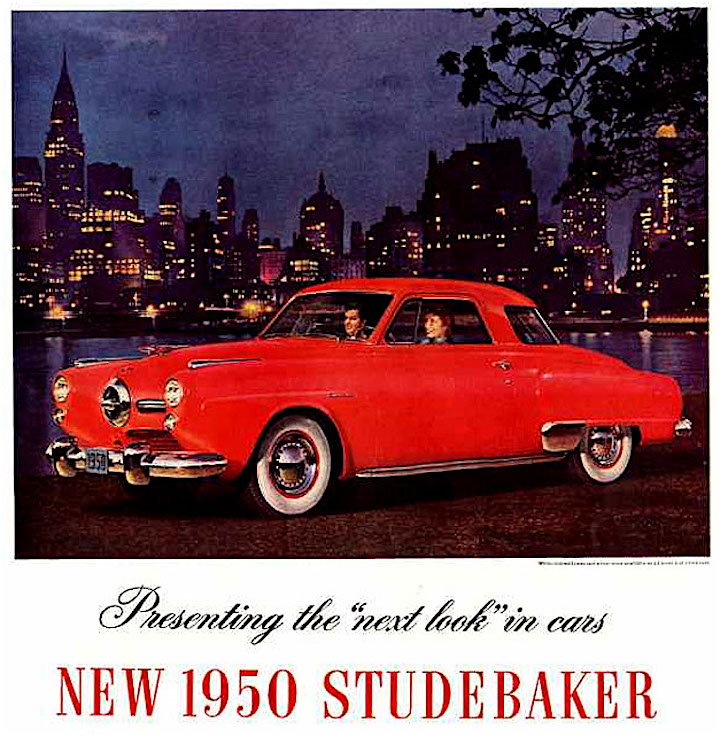
STUDEBAKER (1950) — Studebaker adopted a bullet-nose style in 1950 giving its car a fresh look. Studebaker called it "The Next Look" in cars perhaps implying it would start a trend. Apparently the redesign worked — 1950 sales jumped nearly 250 percent rising to 320,884 units from 129,301 in 1949. This restorable '50 Studebaker was found in Casa Grande, Ariz. (Photos by Jim Prueter)
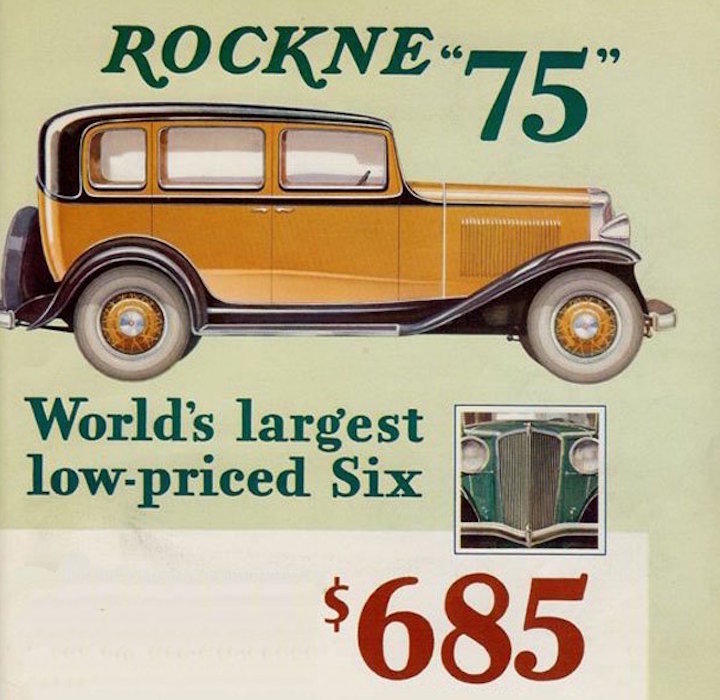
STUDEBAKER (1932) — One of the most famous abandoned cars in the U.S. sits along Old Route 66 in the Painted Desert area of Petrified Forest National Park in Arizona. The rusted hulk of a 1932 Studebaker depicts the remains of transportation along the old east-west highway in the 30s and 40s. The Studebaker, reportedly donated by Frank and Rhonda Dobell of Holbrook, Ariz., is probably the most photographed abandoned car in the country. (Photos by Ted Biederman)
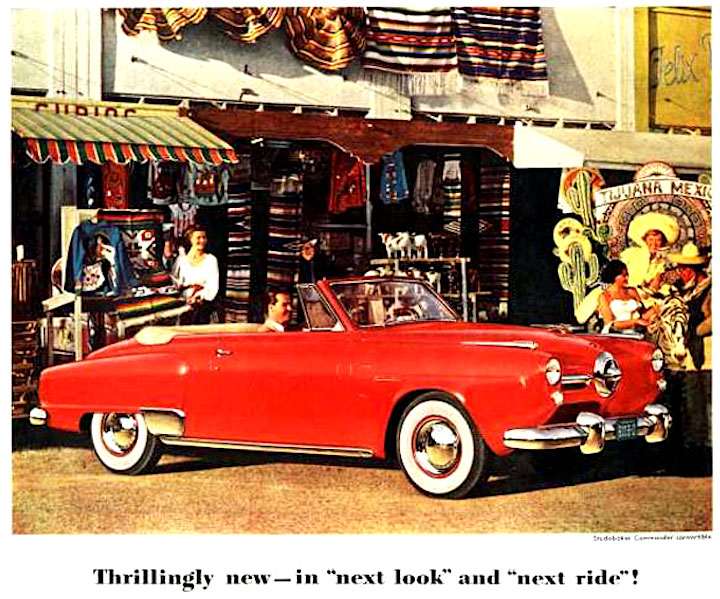
STUDEBAKER (1951) — The Studebaker Champion was produced from the beginning of the 1939 model year until 1958. It was a full-size car in its first three generations and a mid-size car in its fourth and fifth generation models. The base engine was a 2.8-liter inline 6 making 85 horsepower. 1950 marked the first year Studebaker offered an automatic transmission. This third generation 1951 Champion convertible was discovered in a New Mexico salvage yard. (Photo by Becky Antioco)
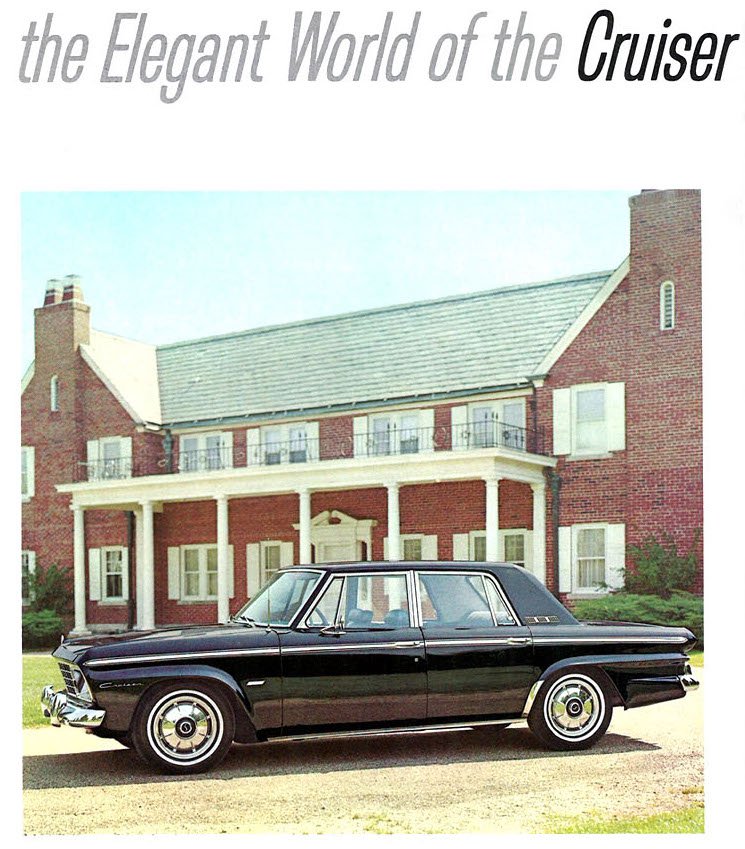
STUDEBAKER (1965) — The Studebaker automobile company built cars from 1902 through 1966, a mainstream car-builder for more than 60 years before reaching an inglorious end with the closing of its last assembly plant in March 1966. This 1965 Cruiser sedan was discovered in retirement in Virginia, one of only 20,000 Studebaker's produced in 1965. 1965 Studebakers used a General Motors-sourced 230-cubic-inch 6-cylinder engine or a 283-cubic-inch V-8. Both engines were also used in Chevrolets. (Photos by Ralph Gable)
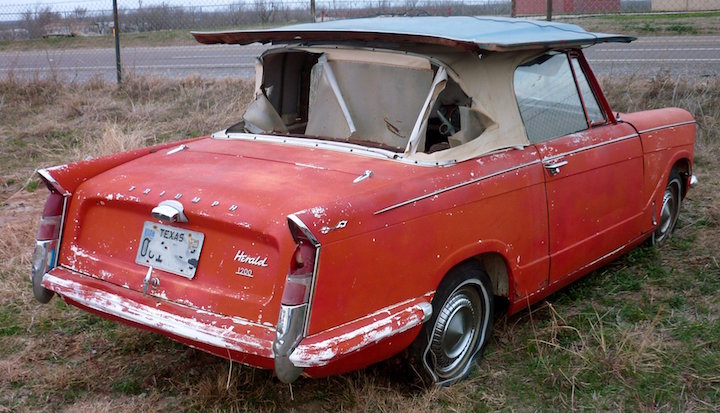
The Triumph Herald is a small two-door car introduced by the Standard-Triumph Company of Coventry, England, in 1959 and made through 1971. Body design was by the Italian stylist Giovanni Michelotti, and the car was offered in sedan, convertible, coupe, wagon and van models. This mid 1960s convertible was found resting by the side of a Texas highway. Above, a 1960 Triumph Herald television commercial. (Photo By Peter Hubbard)
STUDEBAKER (1941-48) — This example of Studebaker’s 1941-48 M-series truck was discovered along old Route 66 in Santa Rosa, N.M. One of the company's most successful line of trucks, it could be purchased i n 1/2 ton, 3/4 ton and 1 1/2 ton and 2 ton versions. First produced in November 1940, it saw extensive action during WW II. It sported a more aerodynamic shape than most trucks of the time. (Photos by Jim Meachen)
WILLYS JEEP (circa late 1940s) — This post-World War II Willys Jeep station wagon was discovered along Route 66 at the Arizona-New Mexico border. The wagon was produced by Willys in the United States from 1946 to 1965 and production continued in Argentina until 1981. Four-wheel drive did not become an option on the wagon until 1949. (Photos by Jim Meachen)
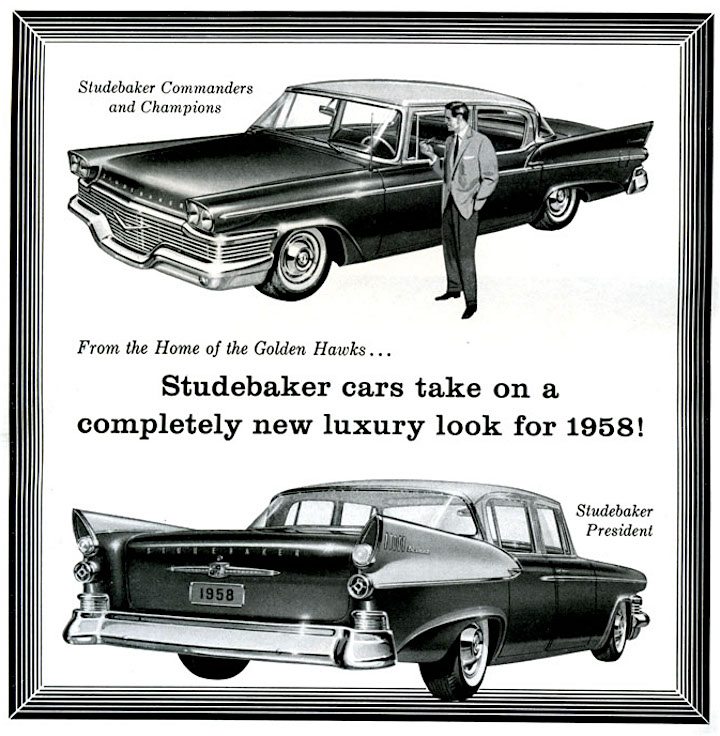
STUDEBAKER (1958) — This 1958 Studebaker President sedan was found stored away behind a building in North Carolina. The President nameplate was revived in 1955 and built through 1958. It came in both two-door and four-door styles. The Studebaker brand ended with 1964 models and its South Bend plant was closed near the end of 1963. (Photo by Ralph Gable)
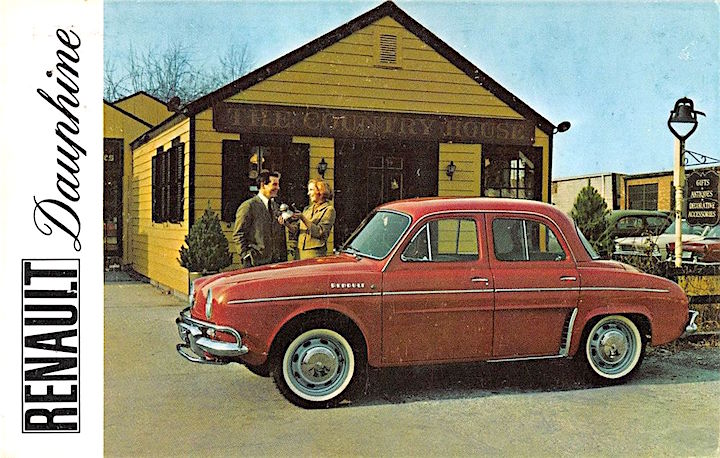
RENAULT (early '60s) — The small French Renault Dauphine sedan sold more than 2 million units during its wordwide run from 1956 through 1967. The Dauphine measured 155 inches in length with a 89.3-inch wheelbase, came with a 51.6-cubic-inch rear-mounted four-cylinder engine with two versions, 27 and 36 horsepower. Zero to 60 time with the larger engine was measured at 30 seconds. Road and Track tested the bigger engine doing 0-to-68 in 32 seconds. Dauphine ads proclaimed 35-to-40 miles per gallon. This circa 1960s model was discovered along Route 66 in Carterville, Mo. At bottom, a magazine ad for an early 1960s Dauphine. (Photos by Jim Meachen and Ted Biederman)
RAMBLER AMERICAN (1964) — 1964 marked the beginning of the third generation Rambler American by American Motors. It was built through 1969 with five body styles including convertible, 2-door hardtop and coupe, 4-door sedan and 4-door station wagon. Three inline 6-cylinder engines (base engine 90 hp) and four V-8s were offered. Transmissions included 3 and 4-speed manuals and a 3-speed automatic. This Rambler convertible was found in Mayer, Ariz. (Photos by Jim Prueter)
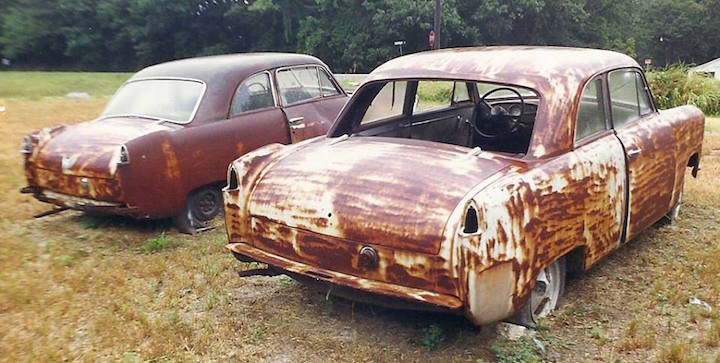
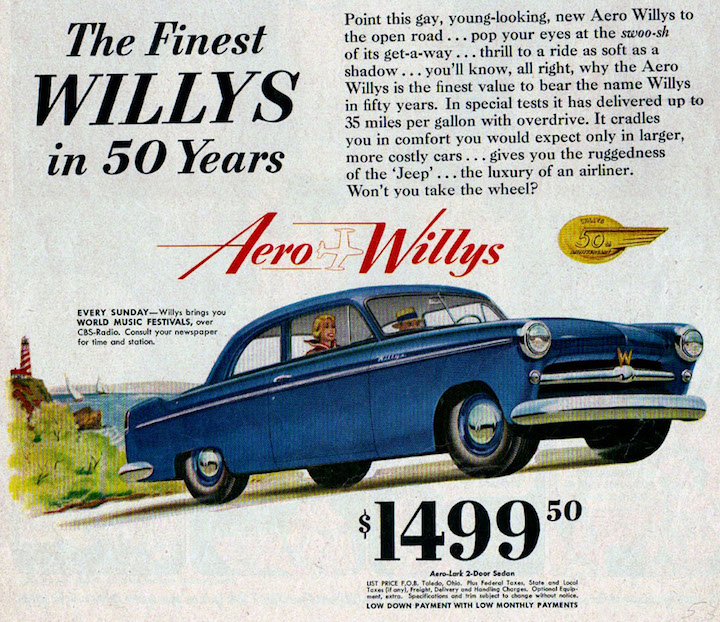
WILLYS (1952) — This is a rare find — two stripped down 1952 Willys Aero coupes were discovered in east Texas by Peter Hubbard and published as part of his Junkyard Dog collection. In 1952, Willys re-entered the car market with a new compact car, the Willys Aero. At first available only as a two-door sedan, it came with either an L-head or F-head six-cylinder engine. A four-door sedan and a two-door hardtop were added for 1953 along with taxi models. The car's final model year was 1955.
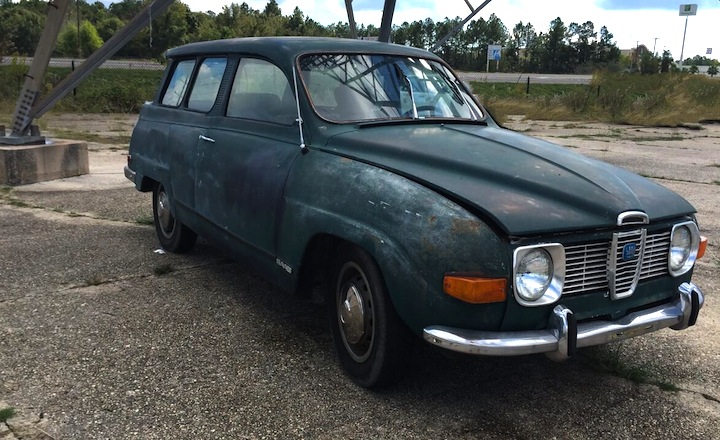
SAAB (1971) — This 1971 Saab 96 wagon was discovered in Louisiana in what appears to be restorable condition. The standard 4-cylinder engine in the Saab 96 from 1967 to 1976 made 65 horsepower and was timed in an excruciating turtle-like 15 seconds from 0-to-60. The Saab 96 was built from 1960 through 1980 and underwent incremental changes and updates through the years. (Photo by Jim Prueter)
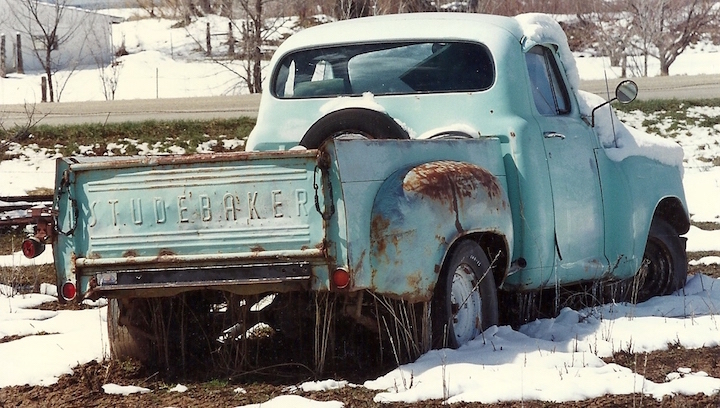
STUDEBAKER (Circa 1949-53) — This circa 1949-53 Studebaker pickup was discovered a few winters ago resting in a field of melting snow in Cortez, Col. It's in the 2R-Series family of Studebaker pickups. They were Studebaker's first pickups after World War II, a rather stylish truck compared to the more popular competition. Standard issue was a carryover inline six-cylinder engine with a three-speed manual transmission. (Photo by Peter Hubbard)
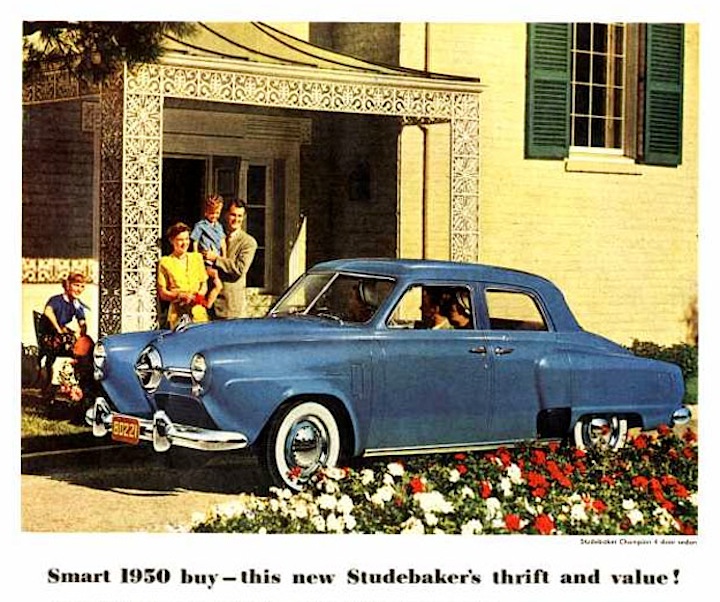
STUDEBAKER (1950) — There were critics who joked about Studebaker's post-World War II styling adventures, but the Studebakers of that era have stood the test of time from their rounded slopping rear end with wrap-around window to their "spinner" grille. This 1950 four-door, that featured suicide doors, watches as life goes by on a North Carolina highway. Above, a magazine advertisement for the 1950 Studebaker. (Photos by Ralph Gable)
This late 1960s or early 1970s Volkswagen Beetle was found enveloped in weeds near White Lake, N.C. The original Beetle was first sold in the U.S. in 1949 and sales continued into 1979 before the car was discontinued in North America. (Photos by Jim Meachen)
VOLKSWAGEN (circ 1975) — The Volkswagen bus was extremely popular in the United States in the late 60s and through the 1970s. The second-generation bus was built from 1967 through 1979 with gradual changes over the years. This circa 1975 bus was discovered in retirement — and in decent shape — in northern Vermont. (Photos by Jim Meachen)
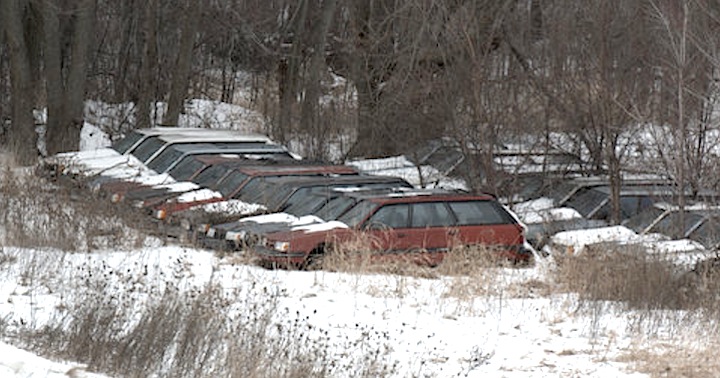
A lineup of Toyotas from about nearly three decades ago resides in the Wisconsin snow, perhaps part of a new-new car lot that time left behind. (Photo by Jerry Brown)
STUDEBAKER (1965/1960) — Studebaker was on its last legs when these two 1965 sedans hit showrooms. About 20,000 Studebaker cars were sold in 1965, not enough to keep the struggling company afloat. The last sedan came off the assembly line in Hamilton, Ontario, Canada, on March 16, 1966. The third member of this all-Studebaker lineup is a 1960 pickup truck. Also shown is an ad for the 1965 Studebaker Commander. (Photos by Ralph Gable)
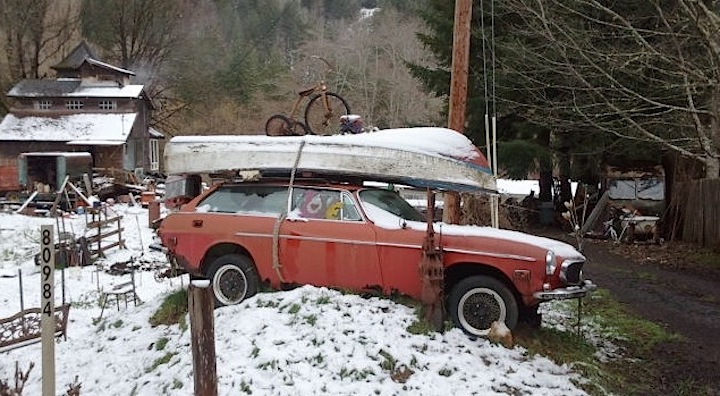
VOLVO (1972-73) — This vintage 1972-73 Volvo 1800ES "coupe station wagon" appears abandoned but ready for action outfitted for summer fun in the middle of winter with a boat and tricycle secured to the top. This style of the sporty 1800 Volvo was produced for only two years reaching showrooms in 1971 as a 1972 model. The rear seat could be folded down to create a long, flat loading area. Only 8,700 copies of the ES1800 were built. (Photo by Jeffrey Ross)
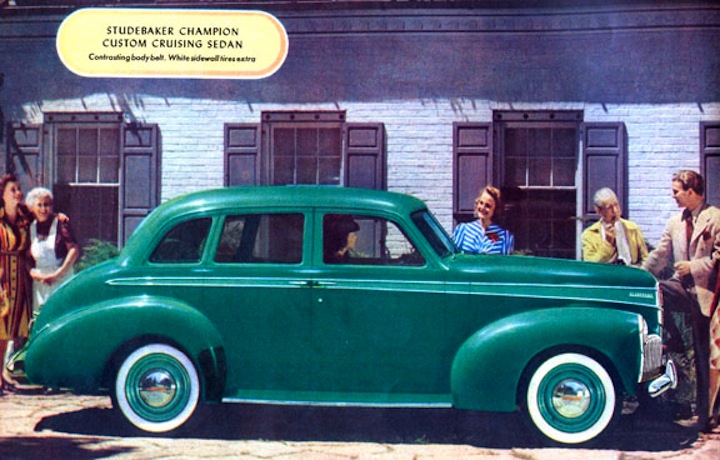
STUDEBAKER (1941) — This Studebaker has seen much better days. The magazine ad above shows what the Studebacker might have looked like some 70 years ago. (Photo by Jim Meachen)
VOLKSWAGEN — This 1970s era Volkswagen Beetle was discovered living with an attractive growth of weeds in eastern North Carolina. The Beetle was enormously popular in the U.S. through more than three decades reaching 15 million sales in 1972 setting an all-time sales record surpassing the previous record holder, the Ford Model T. (Photo by Ralph Gable
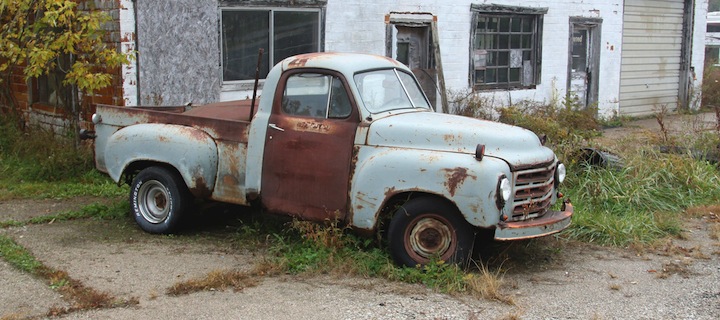
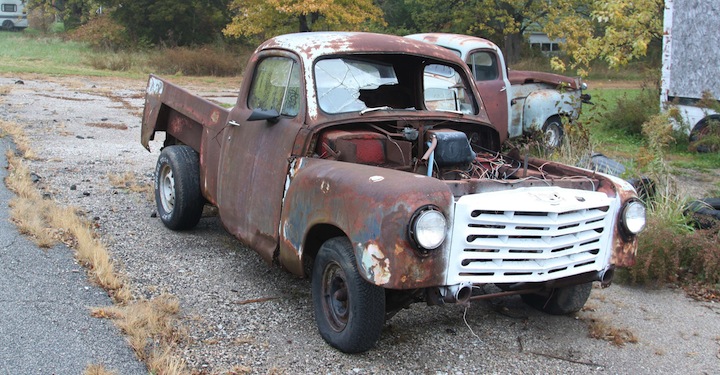
STUDEBAKERS — These 1949-1953-era Studebaker pickups were discovered in retirement in Indiana. The 1949 model was the first all-new post-war pickup from Studebaker, introduced in May 1948. Little was changed over the five-model-year run with the exception of a horsepower boost in the six-cylinder engine from 85 to 102 in 1950. The truck came with a three-speed manual transmission and ahead-of-its-time doubled-walled cargo bed. (Photos by Jerry Brown)
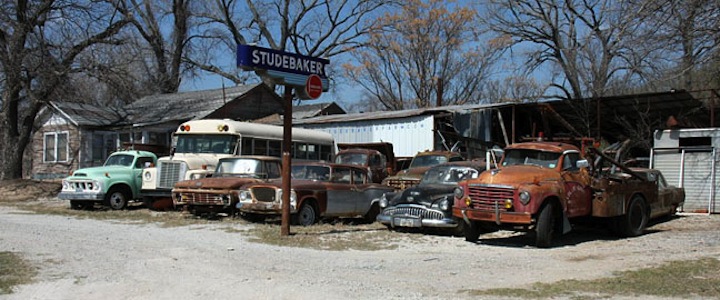
STUDEBAKERS — Douglas A. Kerr captured this "Studebaker car lot" in Weatherford, Texas. Several Studebakers rest with other brands of vehicles. From left, a 1959 Studebaker pickup, a 1977 or 1978 International bus, a 1966 Ford F-100, a 1960 Studebaker Lark, a 1949 Buick, and a 1951 or 1952 Studebaker wrecker.
SUBARU (1986) — This third-generation circa 1986 Subaru GL wagon was found nearly obliterated by weeds. Like today, it was sold with full-time four-wheel drive. The 1.8-liter flat four was mated to either a four-speed automatic or a five-speed manual. (Photos by Ralph Gable)
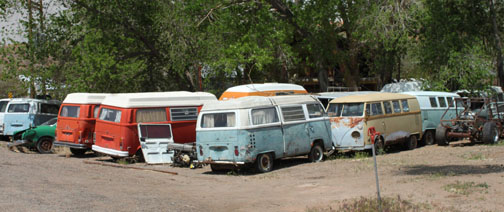
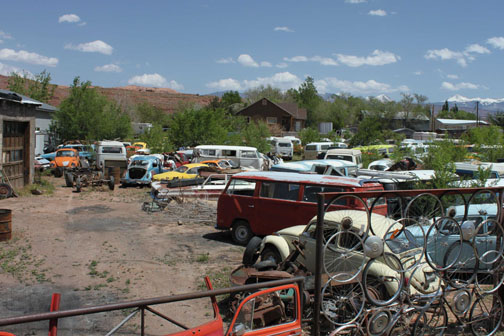
VOLKSWAGEN — A sea of used-up Volkswagens in Moab, Utah. (Photos by Jerry Brown
VOLVO — This copy of either a 1974 or 1975 Volvo 164 was found in an eastern North Carolina farm field. The 164 is a 4-door, 6-cylinder sedan sold by the Swedish car maker from 1968 through 1975. It came with either a three-speed automatic or a four-speed manual transmission. There were 46,008 164s built before the car was superseded by the 264 for the 1976 model year. (Photos by Jim Meachen)
VOLVO — This mid-60s Volvo PV544 photographed in eastern North Carolina seems restorable. The PV544 was built from 1962 through 1966 with the B18 engine (note emblem on grille), a 1.8-liter straight four. Most copies sold in the U.S. came with dual carburetors making 90 horsepower mated to a four-speed manual transmission. A November 1963 issue of Road & Track magazine clocked the Volvo from 0 to 60 in 14 seconds, fairly quick for the time. The quarter mile was recorded in 19.1 seconds at 70 mph with a top speed of 92 mph. Gas mileage for the 2,100-pound coupe was excellent, rated at between 25 and 29 mpg. (Photo by Jim Meachen)
VOLKSWAGEN — This 1970 era Volkswagen Beetle convertible is suffering from neglect. The popular Beetle was sold in the U.S. for three decades before production ended in the late '70s. It was revived with an all-new and modern rendition in 1999. (Photo by Ralph Gable)
